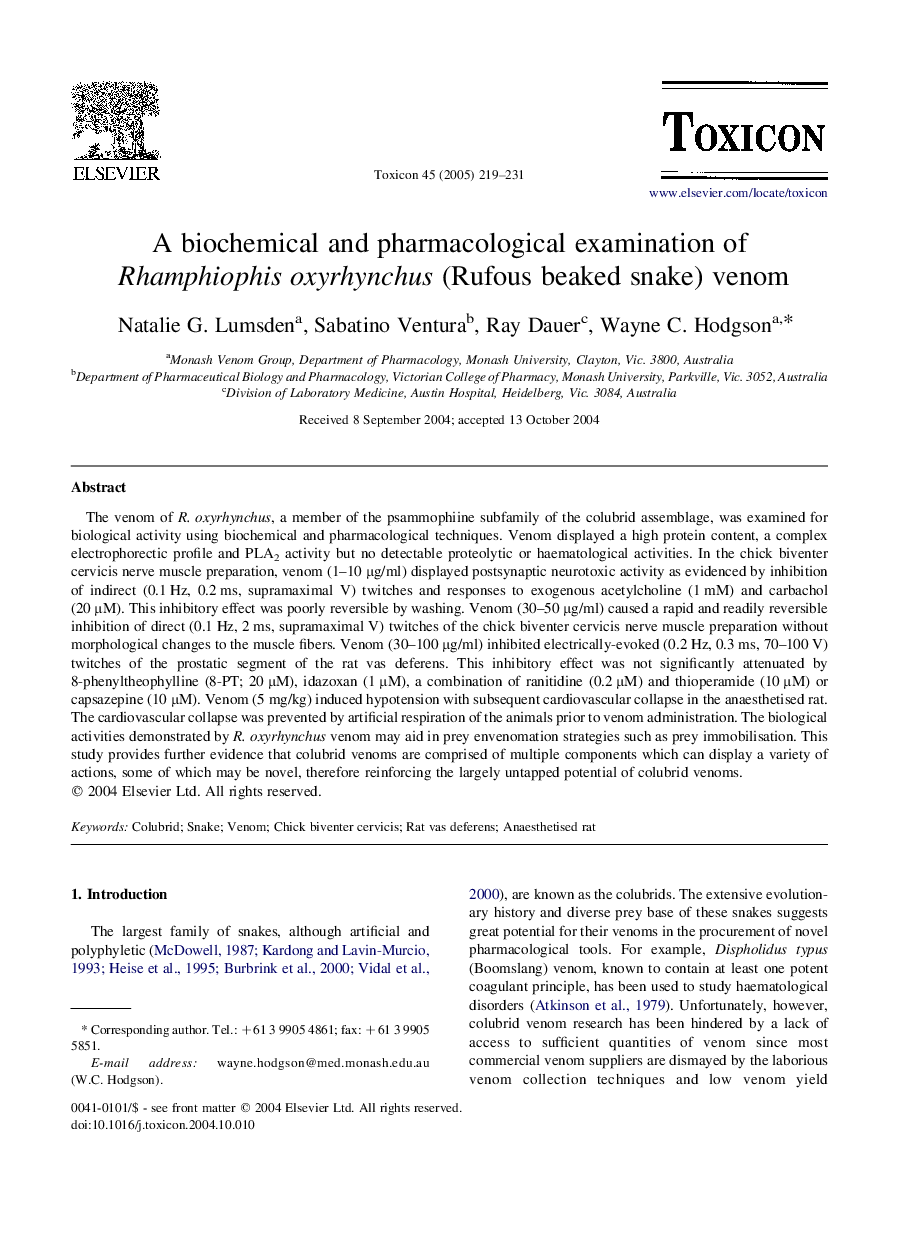| Article ID | Journal | Published Year | Pages | File Type |
|---|---|---|---|---|
| 10880769 | Toxicon | 2005 | 13 Pages |
Abstract
The venom of R. oxyrhynchus, a member of the psammophiine subfamily of the colubrid assemblage, was examined for biological activity using biochemical and pharmacological techniques. Venom displayed a high protein content, a complex electrophorectic profile and PLA2 activity but no detectable proteolytic or haematological activities. In the chick biventer cervicis nerve muscle preparation, venom (1-10 μg/ml) displayed postsynaptic neurotoxic activity as evidenced by inhibition of indirect (0.1 Hz, 0.2 ms, supramaximal V) twitches and responses to exogenous acetylcholine (1 mM) and carbachol (20 μM). This inhibitory effect was poorly reversible by washing. Venom (30-50 μg/ml) caused a rapid and readily reversible inhibition of direct (0.1 Hz, 2 ms, supramaximal V) twitches of the chick biventer cervicis nerve muscle preparation without morphological changes to the muscle fibers. Venom (30-100 μg/ml) inhibited electrically-evoked (0.2 Hz, 0.3 ms, 70-100 V) twitches of the prostatic segment of the rat vas deferens. This inhibitory effect was not significantly attenuated by 8-phenyltheophylline (8-PT; 20 μM), idazoxan (1 μM), a combination of ranitidine (0.2 μM) and thioperamide (10 μM) or capsazepine (10 μM). Venom (5 mg/kg) induced hypotension with subsequent cardiovascular collapse in the anaesthetised rat. The cardiovascular collapse was prevented by artificial respiration of the animals prior to venom administration. The biological activities demonstrated by R. oxyrhynchus venom may aid in prey envenomation strategies such as prey immobilisation. This study provides further evidence that colubrid venoms are comprised of multiple components which can display a variety of actions, some of which may be novel, therefore reinforcing the largely untapped potential of colubrid venoms.
Related Topics
Life Sciences
Biochemistry, Genetics and Molecular Biology
Biochemistry, Genetics and Molecular Biology (General)
Authors
Natalie G. Lumsden, Sabatino Ventura, Ray Dauer, Wayne C. Hodgson,
